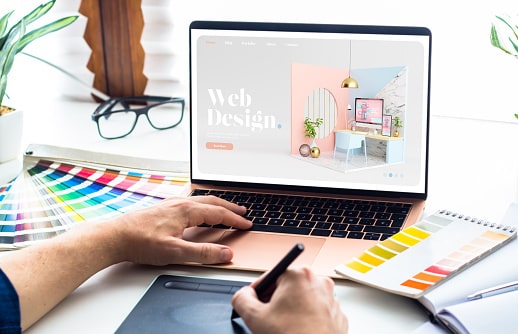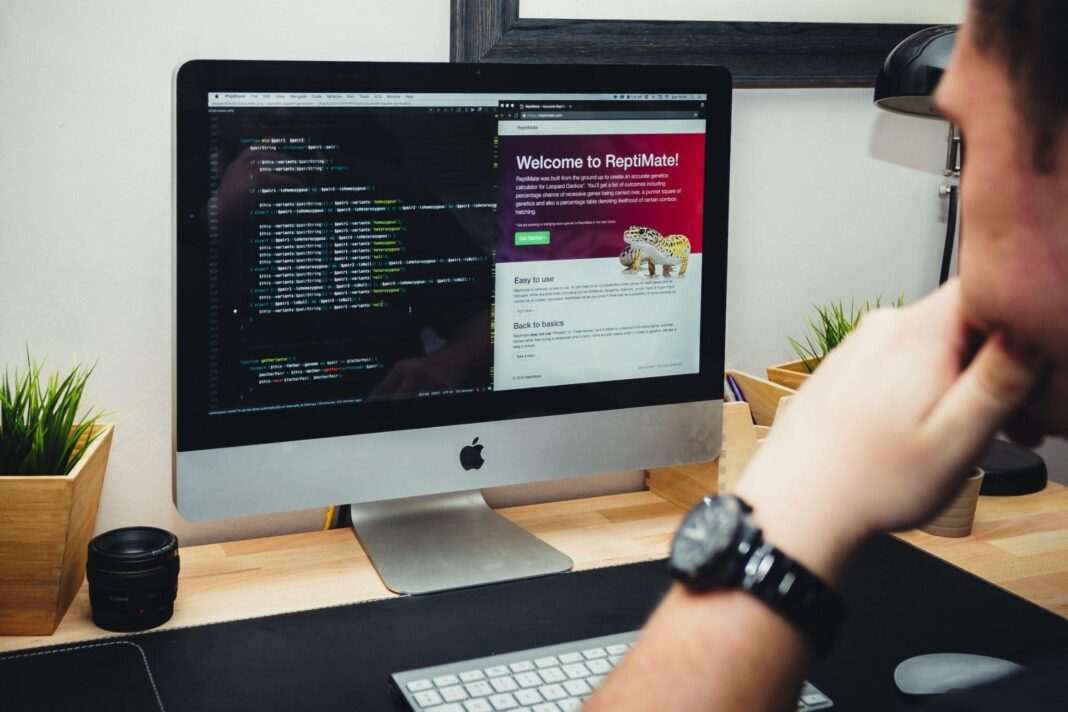9 Rules of Good UI Design to Follow On Every Web Design Project
A web user interface design can be challenging because you must consider many aspects. You will need a great-looking interface and an excellent user experience so that users can reach their goals without any confusion or errors.Still, despite the concept’s popularity, many user interface designers need help understanding the basic rules of UI design. It’s also harder to apply them in practice. This post will walk you through the rules of a good UI.
1. Keep Your UI Design Simple
The UI design process can be fun. However, designs that are self-indulgent distract users from truly relevant elements. So, make sure that you stick with the bare essentials.
All those extra elements must be cut away, leaving out vital ones.

2. Choose Your Calls-to-Actions for web design
To guide users on the tasks and encourage them to take action, you first need to think about what you want them to do.
Generally, there are two types of calls to action that you can use. For instance, the primary call to action is more prominent, highlighting the most important goal. Examples would be “Buy,” “Sign Up,” “Register,” and “Get in Touch.”
On the other hand, the secondary CTA is less critical. You can use it to highlight a less prominent action. Every type of CTA you use should also have a distinctive visual style so that you won’t confuse users.
2. Implement a Visual Site Hierarchy for web design
Your most crucial web UI elements need to be highlighted. That way, it’s easier for users to focus on them.
A simple example is enlarging an element, making it the center of the page. Another way to implement visual hierarchy is by utilizing space to highlight the most critical aspects of the interface. Moreover, the appearance of an unexpected element can also work its magic.
3. Be Methodical and Consistent
One of the basics in UI design is being consistent. Not just internally in your own platform but with industry standards.
Excellent UI design projects don’t reinvent the wheel. Instead, they enhance it. Innovation is good but only when necessary. Like the saying, “If it’s not broken, don’t fix it.”
At Sytian Productions, (website developer,) we always tell clients that consistency means that your design and fonts should work from page to page. Don’t swap the header and body fonts from page to page. Moreover, you should also be aware that iOS apps sometimes work differently than Android.
The needs of desktop sites are different from mobile sites when it comes to galleries, menus and product checkout. Consistent means you don’t frustrate users in figuring out what to do with your site.
4. Provide Informative Feedback
The last thing you want is for users not to understand what’s happening. If you have to click a button, indicate how that button was pressed. For instance, you can animate the button, making it seem like it’s sinking into the page.
If you let users upload files like Google Drive or Dropbox, you should indicate how much time remains. You can place a pop-up that will let them know that their action was a success to decrease their confusion and frustration.
Whenever a user takes action in your interface, even a tiny acknowledgment makes all the difference from an excellent experience to a lackluster one.
5. Define How People Use Your Interface
Before designing your interface, you must define how people will use it. With the rise of touch-based devices, it’s a more critical concern than you might think.
Generally, users use apps and websites in two ways: directly interacting with the product’s interface elements and indirectly interacting with the UI elements external to the product.
6. Accessibility For All for web design
It would help if you also made it easy for everybody to use. This includes people who have disabilities. Making accessibility the core of your design process is vital- it lets users have a great experience, and there are online regulations that require you to give equal access.
There are a lot of excellent resources that will make your site designs more disability-friendly. It might seem that focusing on making your web pages accessible for all uses a lot of resources that are otherwise spent on enhancing the fundamental design of your web pages.
However, in reality, these two processes are linked. For example, by focusing on giving a good experience for people with visual impairments, you’re also radically simplifying your page’s visual design. A simple design translates to a better design, which will also enhance the average user’s experience.
7. Let users navigate easily using shortcuts
Expert users, or users who frequent your site, will need shortcuts to move through the interface quickly.
Like how Windows users use the CTRL + C shortcut to copy and the CTRL + V to paste, make sure your site’s navigation and operating user interfaces are simple using shortcuts.
8. Use Recognition Instead of Recall
Ideally, you want users to recognize everything on your site when they see it. More than anything, you need to streamline your interface so that every part is intuitive and moves from one point to another.
This can be done by placing recognizable specific things.
You can also do this through well-placed messaging reminding a user of what on your site does what.
9. Use high-Quality, Professional Design Software for web design
Many web user interface applications will simplify the UI design process but, in turn, compromise the result.

If you want to design a user interface, software, or app that has the potential to be popular, you need to use high-quality and professionally designed software.
Over to You
So there you have it. These are some of the essential rules for making a better design for your next web design project. A great UI design creates a frictionless environment in which users can thrive.
So, make sure that you apply all of these fundamentals in your future projects so that you’ll know how robust a successful UI design can be. Good luck!
